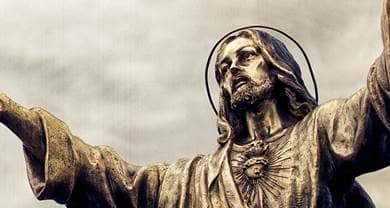- Trending:
- Forgiveness
- |
- Resurrection
- |
- Joy
- |
- Feminism
- |
- Afterlife

RELIGION LIBRARY
Lutheran
Beginnings
Lutheranism began in the early 16th century with the efforts of a Roman Catholic monk, Martin Luther (1483-1546), to reform certain practices of the Catholic Church. Despite later developments, Luther initially aspired to renew Catholicism, not abandon it. His reformation was perhaps the most conservative of all Protestant reform movements (the other being Catholic streams within the Anglican reformation), retaining when possible many elements of Roman Catholicism.
Luther had entered the Augustinian monastery in Erfurt, Germany in 1505 because he was afraid for his own salvation, and he believed monasteries were the safest places to avoid sin and try to please God. While there the leader of his order, Johan von Staupitz, recognized his intellectual gifts and had him train as a biblical scholar and theologian.
Medieval Roman Catholic theology taught that everyone had to work off the offense caused to God for sin to enter heaven. God was angry about sin, and those who were not pure either were punished in hell, or, if they had made good progress on the path to sanctification but had not yet completed it, could burn away or purge remaining sin in purgatory before facing God's judgment.
Purgatory was thought to be much like hell, except it had an end point. Because finite humans, even if very good, could not perform works that merited the infinite gift of eternal life, human works had to be amplified or augmented by divine grace to merit sanctification. This extra grace was especially present in the sacraments, seven rituals among the many church rituals set aside as special occasions of grace: baptism, confirmation, confession, the Lord's Supper, marriage, ordination into the priesthood, and last rites or extreme unction (now known as anointing the sick).
Luther began to question these teachings on the need to perform meritorious works to get to heaven. After finishing his studies he became a professor at the nearby University of Wittenberg. Preparing a lecture for his students on Paul's Letter to the Romans, Luther had an insight. He realized that the original Greek of Romans 1:17 could mean "The one who is righteous will live by faith," as the Catholic Church taught. In other words, those who are good (meritorious) will have faith. But it could also mean "The one who is righteous by faith will live." In other words, it is the gift of faith from God that makes one righteous. For Luther, frightened about his salvation and never sure he was doing enough, the idea that it was not up to him but up to God came as a great relief.
The immediate cause of Luther's split with the Roman Catholic Church was a controversy over indulgences. Indulgences were legitimate parts of the sacrament of confession, but were subject to abuse. Confession has three parts: 1) contrition (you have to be sorry for your sin); 2) absolution (the priest as mediator distributes Christ's forgiveness); and 3) works of satisfaction (to repay the offense caused by sin). These works vary depending on the nature of the offense, from a few prayers ("Hail Marys" for example) to fasting to a pilgrimage. One possible work is a financial contribution to the church. This is an indulgence.
In 1517, Pope Leo X needed money to pay for the renovations and expansion of St. Peter's Basilica in Rome. He authorized Archbishop Albrecht of Mainz to sell special indulgences throughout northern Germany. The Archbishop also needed money because he had gained his position in part in exchange for a huge financial contribution to the pope, which he had made on credit. One of the preachers of indulgences, Johannes Tetzel, began selling them to Luther's parishioners near Wittenberg in the spring of 1517. He separated indulgences from confession, and promised a quid pro quo: time off in purgatory for a financial contribution. One famous line from his sermons is loosely translated, "when the penny in the coffer rings, the soul from purgatory springs."
Many Catholics, including Luther, were horrified. He feared that his parishioners would put their own salvation at risk by relying on this deal. From a German perspective, the enterprise could also be viewed as fleecing German Catholics for money. He argued that if the pope had forgiveness to offer, he should give it away for free as Christ did. He posted his arguments, in the form of 95 theses, on the door of the Wittenberg castle church. And, he posted them in Latin, the language of the learned, because his purpose was to instigate a theological debate on merits among experts. These were, however, quickly translated into German and, with the help of the new moveable type printing press, distributed throughout Germany. Luther had raised trouble for the pope.
The pope sent a Church lawyer, John Eck, to debate Luther publicly in Leipzig in 1519. They did not agree on indulgences, and they did not agree on whether works were necessary for salvation. When Eck argued (correctly, according to Church law) that in cases of disagreement the pope was the final arbiter, Luther the biblical scholar disagreed, claiming his conscience would not allow him to place the authority of the pope over the authority of scripture when he was sure what scripture meant. This challenge to papal authority was Luther's real offense. Luther was excommunicated in 1521 and condemned as a criminal by the emperor that same year. One could no longer follow Luther and be a Roman Catholic. The Protestant Reformation had begun.










